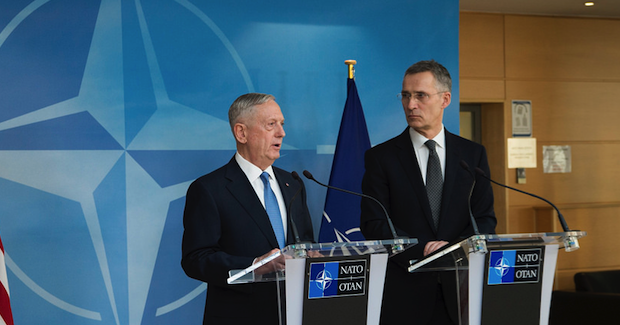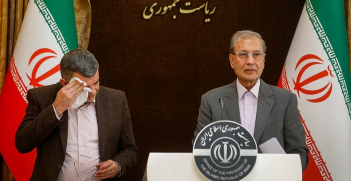America’s New Alliance Management

The Trump administration has embraced a new, reductionist approach to managing its alliances. James Mattis, on his first visit to Europe as secretary of defence, told America’s European allies that they must increase defence spending by year’s end towards 2 per cent GDP or America will “moderate its commitment”.
Mattis’ comments were directed at NATO countries but are in keeping with broader concerns about all of America’s allies. It must be noted that NATO’s members agreed in 2014 to work towards a 2 per cent GDP objective over the next decade. As an example, Germany has a fiscal plan to reach 2 per cent in 2024.
Pronouncements about allies not spending enough on defence have been made before. What is different today is the election of a president on a platform that America is being ‘ripped off’ by allies that have made America weaker and less secure. At his inauguration address, President Trump declared, America has “subsidised the armies of other countries while allowing for the very sad depletion of our military…”.
This appears to be a concerted effort to discipline America’s allies as a collective group so they better serve America’s interests. America is hardly unique in this. Each ally also desires that its alliance with America best serves its national interest. America and its allies actually have similar demands of each other albeit President Trump is using the bully pulpit—normally reserved for domestic political purposes—to make very public denunciations in the international arena. His frequent use of tweets is a further notable innovation. This new shrill approach to alliance management however seems to have several shortcomings from both the American and allied perspectives.
America’s global alliances
America desires to be a great global power with substantial global influence. The country has for many years sought to maintain global primacy. Allied grand strategies are much less ambitious. They principally seek help with their national defence in time of conflict and the various alliance treaties reflect this.
After the Cold War, especially since 9/11, America has sought to make its alliances global. Allies should now help out worldwide, not just regionally or within their national boundaries. There are numerous examples: NATO is now involved worldwide including with numerous designated ‘global partners’; America has designated both the Australian and Japanese alliances as “global in scope”; while the South Korean alliance is today a “global partnership”.
America has upped the alliance stakes. The US now seeks not the local burden sharing originally agreed, but rather global burden sharing to help support the maintenance of American global primacy. In some respects this is a logical development given that some threats, such as terrorism, are not just local issues but at times emanate from distant locations.
Even so, none of America’s allies would be deployed to the Greater Middle East unless America was there. The American military ecosystem makes allied deployments both possible and useful. Without this American push, most allies’ counterterrorism focus would be on internal security involving police and Countering Violent Extremism (CVE) campaigns.
Number-based management
If America wants global burden sharing, will setting a 2 per cent defence budget benchmark help? The answer depends on what the money is spent on.
Increased national defence spending might be spent mainly within the country—just as the US does—and be used as an economic stimulus package to develop local defence industries, bringing jobs and growth. This may create competitors for the US defence industry, cut American military exports and reduce the economies of scale that help support the extant US force structure. This might also impact the civil field. US defence funding has assisted Boeing’s development of its much-exported civil airliners. Others could use new defence money similarly.
From a warfighting perspective, allies spending more on their local products may reduce interoperability as their acquisitions of US defence products declines. Allies may create armed forces well-suited for national defence tasks but not for distant deployments as part of US-led coalitions.
Worse, new funding might simply fund numerous new home bases that consume the operating budget but bring little warfighting gain. US Department of Defense (DoD) studies indicate almost a quarter of American military bases are not required but are retained to placate local politicians at considerable expense.
The large American defence budget also includes spending not included in other countries’ budgets. Medical spending consumes almost 10 per cent of the American DoD budget. Other nations pay for family and ex-service personnel medical care as part of national health systems—it is not a defence budget impost. Should 10 per cent be added to allies’ current defence budget totals to compensate for this difference? Varying accounting approaches allow many ways to game a 2 per cent benchmark and it has already started.
While the 2 per cent benchmark has the virtue of simplicity, it is worryingly simplistic. Countries may meet the spending criteria but become less able to support American national interests—the reverse of the Trump administration’s intent.
Allies’ concerns
From the allies’ perspective, the new alliance management approach seems similarly self-defeating. Comments about moderating America’s NATO alliance commitments by year’s end suggests possible near-term abandonment—the perennial fear of smaller alliance members. This concern deepens when combined with recent presidential comments that NATO is “obsolete”. Seeing America’s strongest alliance commitment so targeted, other allies may reasonably wonder if they are next.
President Trump’s deliberately unpredictable foreign policy further feeds this concern. Maintaining alliances long term rests on those involved having predictable, stable relations. President Trump is now embracing the opposite so others are kept off-balance and unsure of his future actions. There is an implication that America may no longer be a dependable alliance partner.
Unreliability is worrying but more concerning are deliberate presidential attacks. Long-time American ally, Germany, has been particularly singled out. German Chancellor Angela Merkel has been publicly criticised and deemed to be as trustworthy as America’s adversary Vladimir Putin, while Germany’s role in Europe is implied as baleful. Moreover, it seems the president believes the EU—to which many NATO countries belong—should be broken up.
Indeed Steve Bannon, Trump’s chief strategist, also apparently strives for the EU’s demise. His alt-right website, Breitbart, has long advocated that European countries embrace strident nationalism and break from the EU. The website is now opening French and German websites to support nationalist candidates opposed to the EU and NATO in this year’s French and German elections. White House staff and Russian officials may both be seeking to influence the elections’ outcomes.
This then brings us back to American grand strategy. President Trump’s new alliance management approach seems flawed if better burden sharing is the intent. The harsh public rhetoric, 2 per cent budget redlines and threats to moderate long-held commitments all create confusion and concern across not just NATO, but other alliances too. Does the president’s telephone call with Prime Minister Malcolm Turnbull presage Australian alliance difficulties in an echo of the attacks on Merkel and Germany?
In this, the new alliance management approach’s shortcomings become manifest. Australia and other American allies are burden sharing in the Middle East by contributing military forces to the anti-ISIS coalition. Trump is signalling a greater American military effort in this campaign and will doubtlessly call on America’s allies to do more. The Trump alliance management approach so far seems to make a meaningful allied response less, rather than more likely. Alliances are a two-way street; their management requires more sophistication.
Dr Peter Layton is a visiting fellow at the Griffith Asia Institute, Griffith University. For his work at the Pentagon, he was awarded the US Secretary of Defense’s Exceptional Public Service Medal.
This article is published under a Creative Commons Licence and may be republished with attribution.





